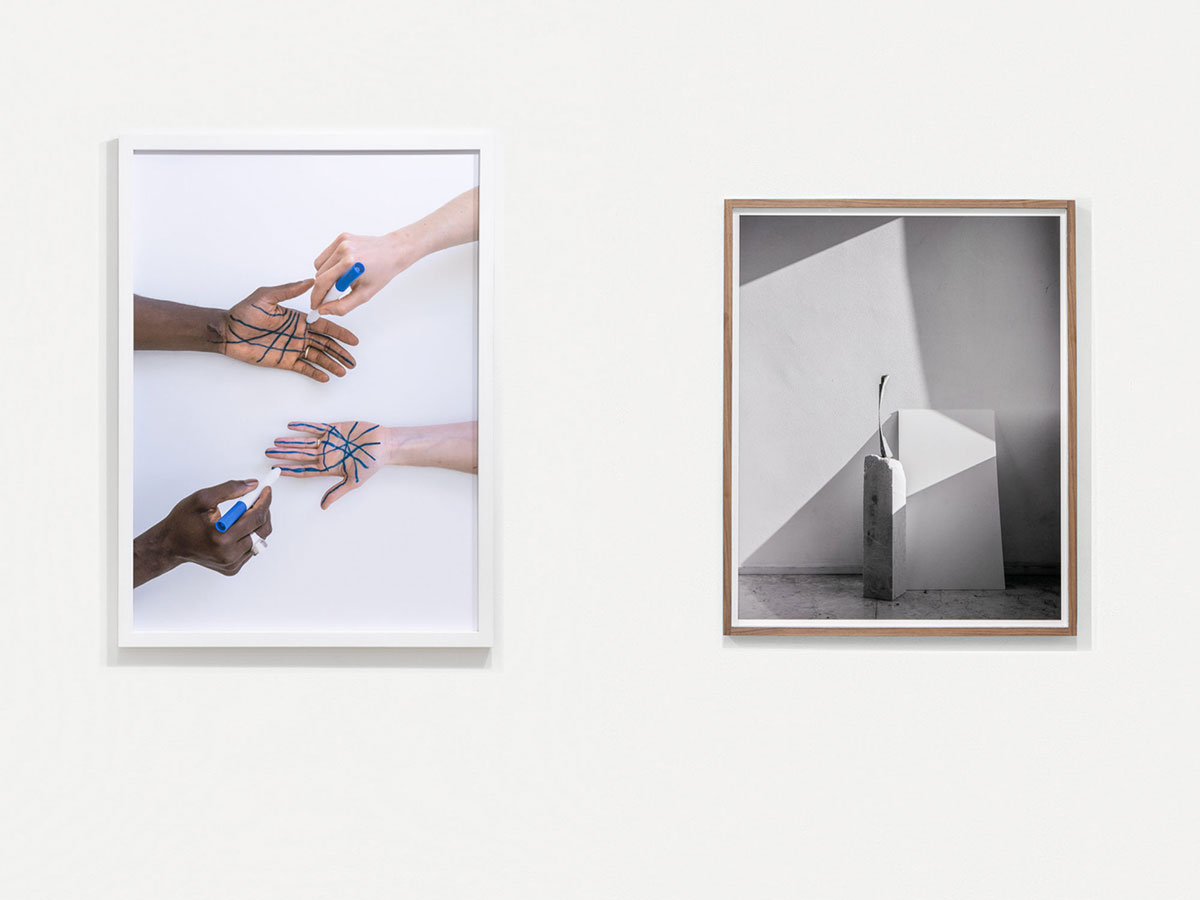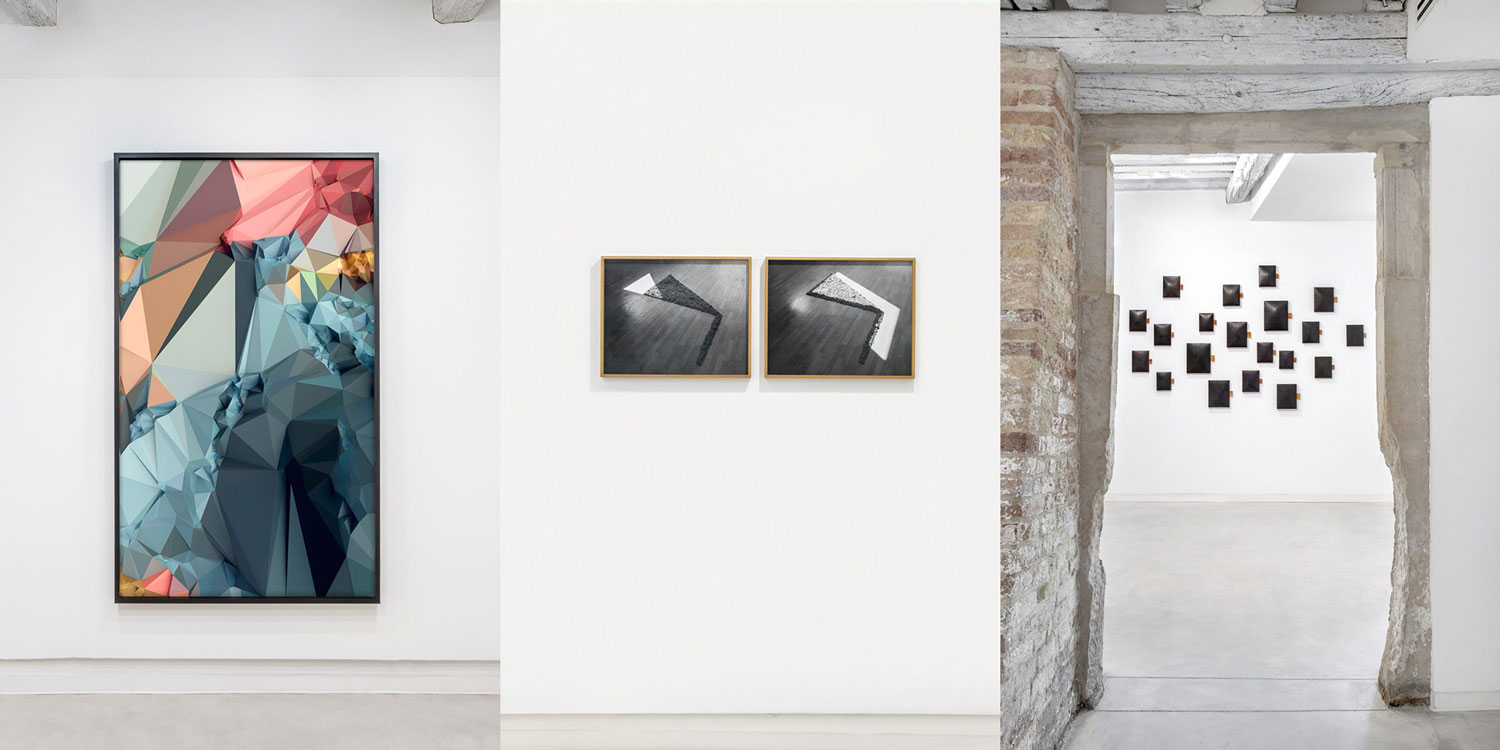ART CITIES:Venice-Stanze
 The exhibition “Stanze” is a project in three spaces involving six artists: two for every space of Marignana Arte Gallery in Venice. Selected on the basis of an empathetic sensibility and put together pairwise in the spaces of the Gallery, their works, most of them previously unseen and specifically realized for the exhibition, trigger a dialogue revolving around the themes of the individual and collective memory, of the persistence of knowledge and of the transformation of the image, of the resistance of the materials compared to the resilience of the languages.
The exhibition “Stanze” is a project in three spaces involving six artists: two for every space of Marignana Arte Gallery in Venice. Selected on the basis of an empathetic sensibility and put together pairwise in the spaces of the Gallery, their works, most of them previously unseen and specifically realized for the exhibition, trigger a dialogue revolving around the themes of the individual and collective memory, of the persistence of knowledge and of the transformation of the image, of the resistance of the materials compared to the resilience of the languages.
By Dimitris Lempesis
Photo: Marignana Arte Archive
The exhibition “Stanze” intends to reflect on how the artist lives the expositive space, through a free interpretation of his relationship with it, in an open dialogue with the others: to the curator the role of activating these visual and sensorial short circuits through the juxtaposition of works belonging to two different artists for every expositive space. At the same time, the relationship between persistence and turbulence has always been involved in the creative process and in the poetic of the artist who has always been torn between the desire of sedentariness, that is recognizability and affirmation of his work in the world, and the innate need of isolation and metamorphosis, as privileged moments of deep reflection about his own work, far away from the mechanisms and the gears of the system. The project opens in the first room of the Gallery with a dialogue between Donatella Spaziani and Bianco–Valente, a meeting focused on the body as a place of interior and exterior transit. The works presented by Spaziani are three anatomical charts of the 1960s-70s, on which the artist has inserted thorough clippings obtained from a floral wallpaper: in the middle, the nervous system, the most fragile and “dangerous” part, on which are applied very small fragments of a white-black damask paper to stimulate the reflection about human fragility and about being at the mercy of not often searched transformations and evolutions. The works of Bianco–Valente, already presented in Palermo in the occasion of the project “Terra di me” at Palazzo Branciforte, are the result of a series of considerationns about how the idea of the Mediterranean Sea has changed through the centuries. Also in this case it has been used an antique nautical map of the Mediterranean Sea, into which the coast of Sicily, that of Tunisia and the isles of Linosa, Pantelleria and Lampedusa are recognizable, making of it a kind of tattoo on the palm of the hand, letting the lines of navigation routes weaving with the “lines of destiny” that characterize the hand of every person. The idea is that the journey, weaving with other experiences, inevitably modifies its own being and future. Simultaneously, through the personal story of a cultural mediator and a refugee come to Italy from sub-Saharan Africa, who got married and now live together in Palermo, the artists have taken on the theme of our cultural identity that has always been based on the exchange and the interaction with other Mediterranean cultures. In the second space the dialogue happens between Mats Bergquist and Marco Maria Zanin. The first one of North-European culture through a slow and supervised work, superimposes layers of materials, as glues, chalk, pigments and encaustic technique on wood and following on canvas, obtaining concave and convex surfaces that settle in the space, creating spaces full of a spirituality that, recalling the ancient tradition of the icons, turns into a dramatic apparition, enchanting and changeable, where the gaze seizes the monochrome mystery, between surfacing and sinking into the mystery, tension between fullness and emptiness. This relationship between material and image, in its emergence from an ancestral place-time, is found and activated in the dialogue with the work of Marco Maria Zanin, Paduan artist who has always being investigating the value and the role of the roots and of the traditions in the contemporary world, trying to translate them into the present through the photographic medium and composite environmental installations, to give back their power, not only iconic, but also of value, to the beholder and to the cultural operator of today. Oscillating between two geographical and semantic poles – the rural and peripheral areas of his land and some international and hyper globalized metropolitan cities, where tradition and memory are constantly submitted to a process of forgetfulness and questioning – the works of Zanin mix different temporalities, looking for transcultural archetypes, resulting in a conceptual and metaphysical outcome. If it is clear that the matter of the history of art is persistent in all the artists, this theme is punctually and originally addressed by the third duet between Serena Fineschi and Davide Quayola. Both Italian, they live and work abroad: Fineschi in Bruxelles, Quayola in London. Unavoidable is their questioning, through two creative different perspectives and modalities, about the significance of their original culture in the new territory they are working in. From here the works exposed at the exhibition: Quayola, an artist related to the new media, investigates in his Iconographies the matrices and the dynamics of the great masterpieces of the history of art, choosing the full Renaissance as the place where undertaking his research, in order to interrogate the construction of a visual system and to dismantle-recall it through the digital processing. Fineschi, in a certain way, has always been working on the problem of the relationship with the past, also intended as artistic tradition: in her work the tradition of the Sienese painting is mixed with the meeting of the Flemish painting, that is, in turn, unavoidably bound to the Italian Renaissance. Working with this duality, for the expositive project Fineschi critically investigates the problem of the color of the Venetian Renaissance, sampling and attacking, with her conceptual operation, monochrome backgrounds of changing persistence.
Info: Curators: Ilaria Bignotti and Maria Savarese, Marignana Arte, Dorsoduro 141, Rio Terà dei Catecumeni, Venice, Duration: 9/2-20/4/19, Days & Hours: Tue-Wed 14:00-18:30, Thu-Sun 11:00-13:30 & 14:00-18:30, www.marignanaarte.it



